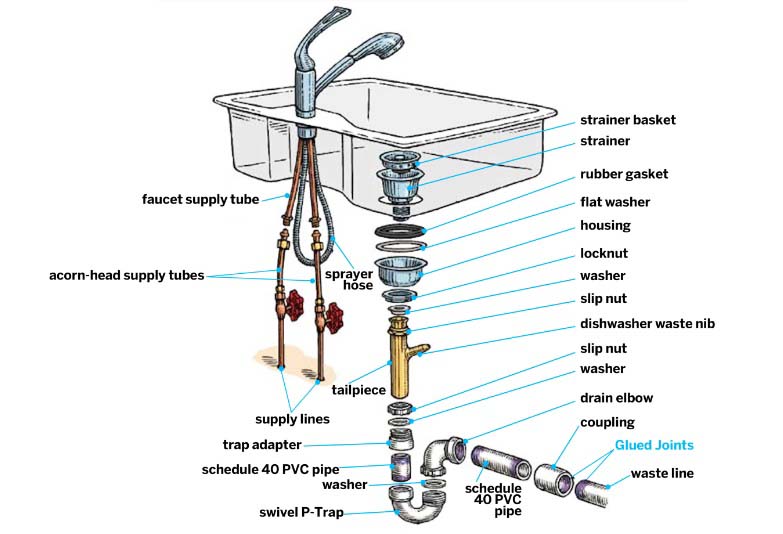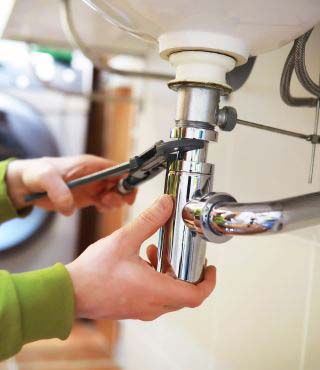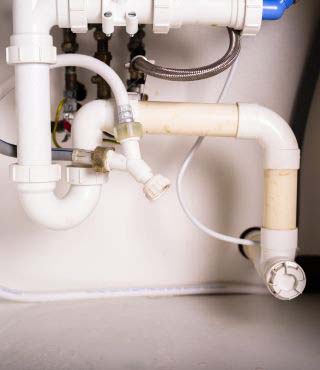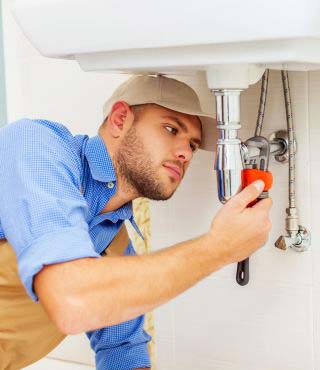Understanding the kitchen sink plumbing diagram is crucial for maintaining a smoothly functioning kitchen. This diagram serves as a visual guide to the intricate network of pipes and connections beneath the sink, revealing the pathway of water and waste. By comprehending this system, homeowners and professionals alike can troubleshoot issues efficiently, ensuring a well-maintained kitchen environment.
Proper plumbing holds immense significance in sustaining a functional kitchen. The pipes beneath the sink play a pivotal role in managing water flow, preventing leaks, and efficiently channeling waste away. A well-designed plumbing system not only enhances the kitchen’s operational efficiency but also safeguards against potential water damage and costly repairs.
Imagine the inconvenience of a clogged drain or a leaking pipe disrupting daily activities—emphasizing the importance of a clear understanding of the kitchen sink plumbing diagram.

Understanding the Kitchen Sink Plumbing System
The kitchen sink plumbing system comprises several essential components working in harmony to facilitate seamless water flow and drainage. At its core is the sink, where water is used for various kitchen activities. Beneath the sink lies the drain, a critical component responsible for carrying away used water and preventing clogs.
Connected to the drain is the trap, a curved section of pipe designed to retain a small amount of water. This water serves as a barrier, preventing unpleasant odors and gases from entering the kitchen. Extending from the trap is the trap arm, connecting it to the main drain line.
The main drain line directs water away from the sink and into the broader plumbing system. For proper functionality, a vent pipe is installed to allow air to enter the system, preventing suction and facilitating smooth drainage. This vent pipe also plays a crucial role in preventing airlocks, ensuring water can flow freely.
Completing the system are the supply lines, responsible for delivering fresh water to the sink for daily activities. These components work cohesively: the sink collects water, the drain removes used water, the trap prevents odors, the trap arm connects to the drain line, the vent pipe aids drainage by allowing air in, and the supply lines provide a steady flow of fresh water.
Types of kitchen sink plumbing diagram
Various types of plumbing diagrams are commonly employed for kitchen sinks, each tailored to specific configurations and requirements. Two primary sink setups are prevalent: single-bowl and double-bowl. In single-bowl sinks, a solitary drainage system is utilized, simplifying plumbing arrangements. Conversely, double-bowl sinks necessitate a more intricate plumbing structure due to the presence of two separate basins.
The layout of kitchen sink plumbing diagrams is influenced by factors such as sink location and surrounding fixtures. For instance, an island sink may have a different plumbing arrangement compared to a sink positioned against a wall. Understanding these variations is crucial for efficient plumbing installations.
A straightforward diagram often includes a P-trap connected to the sink’s drain in single-bowl configurations, ensuring effective wastewater removal. Double-bowl setups, on the other hand, require a more elaborate design, incorporating additional pipes and traps for both basins.
Installation of a Kitchen Sink Plumbing System
Installing a kitchen sink and its plumbing system can be a straightforward task with the right approach. Begin by selecting a sink that fits your space and preferences. Before installation, turn off the water supply to ensure safety.
When connecting the drain components, start with the basket strainer. Apply the plumber’s putty around its flange before securing it in the drain hole. Tighten the locknut underneath to create a watertight seal. Next, attach the tailpiece and connect it to the P-trap. Ensure the connections are snug but not overly tightened to prevent leaks.
Using the right plumbing tools is essential. A pipe wrench is handy for tightening and loosening threaded connections. A pipe cutter helps trim pipes to the required length with precision. Additionally, use a plunger to clear any blockages in the drain.
Always follow the manufacturer’s instructions for your specific sink and plumbing components. Run water through the system to check for leaks and make necessary adjustments. With attention to detail and the proper tools, installing a kitchen sink plumbing system can be a successful and rewarding DIY project.
Understanding Ventilation in Kitchen Sink Plumbing
Ventilation in kitchen sink plumbing is crucial for maintaining proper drainage and preventing airlock issues. Vent pipes play a key role in this system, allowing air to enter and exit the plumbing system, ensuring smooth water flow.

The importance of vent pipes lies in their ability to equalize pressure within the pipes. As water drains from the sink, air needs to be replaced it to prevent a vacuum effect that could impede drainage. Vent pipes facilitate this by allowing air to enter, maintaining a balanced pressure system.
Ventilation also prevents airlock issues, where trapped air in the pipes can hinder water flow. Without proper venting, gurgling sounds and slow drainage may occur, indicating potential problems. Vent pipes act as a release valve for air, preventing such issues and ensuring efficient drainage.
These vent pipes are typically connected to the main vent stack, a vertical pipe that runs through the building and releases sewer gases outdoors. The connection to the main vent stack allows for a continuous pathway for air to enter and exit the plumbing system, promoting optimal functionality in kitchen sink drainage.
How Does the Kitchen Sink Drain Work?
The kitchen sink drain operates through a straightforward process, relying on gravity for efficient water removal. When you turn off the tap, water laden with residue flows down the drain. The drainpipe, positioned beneath the sink, acts as a conduit for this wastewater.
Gravity plays a pivotal role in this system, pulling the water downward. As the water descends the drainpipe, any food particles or debris get carried along. The drainpipe is designed with a slope, aiding gravity in its task of swiftly guiding water away.
Beneath the sink, a p-trap, a curved pipe, retains a small amount of water. This water creates a seal, preventing sewer gases from rising into your kitchen. The wastewater exits your home through the main sewer line, thanks to the force of gravity.
What is a P-trap?
A P-trap is a crucial component in kitchen sink plumbing, serving as a bend in the pipe-shaped like the letter ‘P.’ Its primary role is to prevent sewer gas from entering the home. This gas, laden with unpleasant odors and potentially harmful substances, can infiltrate living spaces through drains.
The P-trap accomplishes this by retaining a small amount of water in its curved section, creating a barrier that blocks the passage of gases. Without a P-trap, these noxious fumes could enter the kitchen, posing health risks and causing unpleasant smells.
Regularly used sinks maintain the water seal, ensuring the P-trap’s effectiveness in safeguarding homes from sewer gas intrusion. Therefore, the installation and maintenance of P-traps are essential practices in preserving a hygienic and odor-free kitchen environment.
Upgrades and Innovations in Kitchen Sink Plumbing
Experience a revolution in kitchen sink plumbing with the latest upgrades and innovations. Embrace high-efficiency fixtures that optimize water usage, reducing waste without compromising performance. Smart plumbing technologies bring convenience to your fingertips, allowing remote control and monitoring for a seamless kitchen experience.
Choose eco-friendly options that prioritize sustainability without sacrificing functionality. From water-saving faucets to energy-efficient disposal systems, these advancements contribute to a greener, more environmentally conscious kitchen.
Stay ahead of the curve by integrating these modern solutions into your home, transforming your kitchen into a space that aligns with both efficiency and environmental responsibility.
Maintenance Tips for Kitchen Sink Plumbing:
Maintaining a healthy kitchen sink plumbing system is crucial for a smoothly running household. Clear out debris, such as food particles and grease, to prevent clogs. Use a non-abrasive cleaner to keep your pipes free from build-up.
Regular checks for leaks and corrosion are essential. Inspect pipes, connections, and joints for any signs of water escape. Addressing leaks promptly can prevent water damage and costly repairs. Keep an eye out for corrosion, especially in older pipes, as it can weaken the structure and lead to leaks.
If you notice persistent leaks, slow drainage, or unpleasant odors, it’s time to call in the experts. Professional plumbers have the skills and tools to diagnose and fix complex issues. Trying to tackle major problems without the right expertise may worsen the situation.

Common Plumbing Issues and Troubleshooting
Kitchen sink plumbing can encounter several common problems, but with some basic troubleshooting, you can often address these issues on your own. Clogged drains are a frequent annoyance; to tackle this, use a plunger or a mixture of baking soda and vinegar to break down blockages. Ensure proper disposal use, avoiding grease and large food particles.
Leaking pipes demand swift attention. Tightening loose connections with a wrench may solve the issue. For small leaks, applying a pipe sealant can provide a temporary fix until professional help is sought.
Low water pressure can be frustrating, often caused by mineral buildup in faucet aerators. Remove and clean them to restore optimal flow. Additionally, check for hidden leaks in the plumbing system, as even minor leaks can lead to pressure loss.
While DIY troubleshooting is effective for many problems, there are instances when professional assistance is crucial. Persistent leaks, major pipe damage, or sewer line issues fall into this category. Professional plumbers possess the expertise and tools to handle complex problems efficiently.
Preventive maintenance is key. Regularly clean drains, inspect pipes for leaks, and address issues promptly. With a proactive approach and some basic DIY skills, you can keep your kitchen plumbing in good working order.
Proper Maintenance and Care
Proper maintenance and care are crucial for preventing plumbing issues and ensuring the longevity of your plumbing system. Regular maintenance not only saves you from costly repairs but also promotes a hygienic and efficient environment.
To keep your kitchen sink and plumbing system in top condition, adopt a proactive approach. Firstly, regularly clean the kitchen sink to prevent the buildup of debris and food particles. Use a mild detergent and warm water to wash away grease and grime. Additionally, pour a mixture of baking soda and vinegar down the drain to eliminate unpleasant odors.
Routine checks on pipes and faucets are essential. Fix any leaks promptly to prevent water damage and mold growth. Periodically inspect the water supply lines and valves for signs of wear or corrosion. A proactive attitude towards these small tasks can save you from major plumbing disasters.
Avoid introducing harmful substances into your plumbing system. Grease, oils, and coffee grounds are common culprits that lead to clogs and blockages. Dispose of these substances in the trash rather than washing them down the drain. Furthermore, be mindful of what you flush down the toilet to prevent potential blockages.
Proper waste disposal is equally important. Dispose of chemicals, paints, and other hazardous materials through designated channels rather than pouring them down the drain. This not only protects your plumbing but also contributes to environmental conservation.
Upgrading and Renovating Kitchen Sink Plumbing
Upgrading and renovating your kitchen sink plumbing can elevate the heart of your home, offering a range of benefits for improved functionality and efficiency. Consider exploring the possibilities of this upgrade to enhance your daily kitchen experience.
Modernizing the plumbing system brings numerous advantages, such as increased water efficiency, reduced chances of leaks, and enhanced durability. New fixtures and materials can not only improve the overall aesthetic but also contribute to water conservation and cost savings over time.
When contemplating such changes, it’s essential to hire qualified professionals. Seek recommendations and ensure they possess the necessary licenses and certifications. Professional plumbers can assess your current system, propose suitable upgrades, and execute the project with precision.
Major plumbing changes may require permits, depending on your location. Check local regulations and obtain the necessary permits before initiating any renovations. Compliance with these regulations ensures the safety and legality of the upgrades, giving you peace of mind as you enjoy the enhanced functionality of your modern kitchen sink plumbing.
Safety Considerations
When tackling kitchen sink plumbing, prioritize safety to avoid potential hazards. Always turn off the water supply before attempting any repairs. Use caution when handling tools, and wear appropriate protective gear, such as gloves and safety glasses, to prevent injuries.
DIY repairs can pose risks, especially for those unfamiliar with plumbing systems. Incorrect installations may lead to leaks, water damage, or even electrical issues. Avoid using excessive force when tightening connections to prevent damage to pipes or fixtures.

If faced with complex issues or uncertainty, seek professional assistance. Trained plumbers possess the expertise to address challenges safely and efficiently. Don’t compromise your well-being or the integrity of your plumbing system—know your limits and entrust intricate tasks to skilled professionals. Prioritizing safety ensures a secure and functional kitchen environment.
Cost Factors and Budgeting
| Topic | Details |
| Cost Factors in Kitchen Sink Plumbing | Materials: Consider the cost of pipes, fittings, and other plumbing materials required for repairs or installations. Labor: Labor costs vary based on the complexity of the job and local labor rates. Skilled plumbers may charge higher rates. Scope of Work: The extent of repairs or the complexity of the installation affects costs. Extensive repairs may incur higher expenses. Permits: Some plumbing projects may require permits, incurring additional costs. Check local regulations to understand permit requirements. Emergency Repairs: Urgent plumbing issues may cost more due to the need for immediate attention, especially outside regular working hours. |
| Budgeting Tips and Obtaining Quotes | Research: Research typical costs for similar plumbing projects in your area to set a realistic budget. Multiple Quotes: Obtain quotes from multiple reputable plumbers to compare prices and ensure a fair estimate. Consider both established companies and local professionals. Detailed Quotes: Request detailed quotes that outline the scope of work, materials, labor costs, and any additional charges to avoid surprises later. Ask Questions: Seek clarification on any unclear aspects of the quotes, ensuring you understand what each quote includes. Check References: Before hiring, check references and reviews to gauge the reliability and quality of work of the plumbing professionals. |
| Balancing Cost with Quality Workmanship | Avoid Lowest Bids: Extremely low bids may indicate subpar materials or craftsmanship. Equalizer affordability with the importance and experience of the plumber. Warranty and Guarantees: Inquire about warranties or guarantees offered by the plumber for both labor and materials. Quality work often comes with assurances. Long-Term Cost Considerations: Investing in higher-quality materials and skilled labor may save money in the long run by reducing the likelihood of future repairs. Communication: Discuss your expectations with the plumber, ensuring a clear understanding of the project’s goals and your budget constraints. |
Frequently Asked Questions
Can I use chemical drain cleaners?
Avoid chemical gutter cleaners. They can harm pipes and spoil the climate. Instead, try a plunger or a drain snake for a safer solution.
How do I locate and fix a leak?
To locate and fix a leak, start by visually inspecting the area for water damage. Use a flashlight to check common sources like pipes, faucets, and appliances. If the source is unclear, turn off the water supply and observe the water meter; a change indicates a hidden leak. Check for damp spots, mold, or unusual odors. Repair visible leaks with a wrench or pipe tape. For hidden leaks, consult a professional plumber. Timely detection and swift action prevent extensive damage.
What tools do I need for basic plumbing repairs?
For basic plumbing repairs, gather essential tools: an adjustable wrench for tightening pipes, a plunger for unclogging drains, pipe wrenches for stubborn fittings, a pipe cutter for precise cuts, and a plumber’s tape to seal threaded connections.

Conclusion
We’ve explored the vital elements of a kitchen sink plumbing diagram, highlighting the intricate network that ensures seamless functionality. Understanding this blueprint is crucial for anyone seeking an efficiently operating kitchen. Summarizing key points, we’ve emphasized the interconnected components, from traps to vents, that contribute to a well-balanced plumbing system.
Reiterating the significance of comprehending the kitchen sink plumbing diagram, we stress that awareness empowers homeowners to troubleshoot issues and make informed decisions. A functional kitchen relies heavily on a well-maintained plumbing system, making it imperative to grasp the intricacies depicted in the diagram.
In closing, I encourage readers to be proactive in maintaining and caring for their kitchen sink plumbing. Regular inspections, prompt repairs, and mindful usage are simple yet effective ways to ensure a trouble-free and hygienic kitchen environment. By taking these steps, homeowners can enjoy a smoothly functioning kitchen for years to come.






